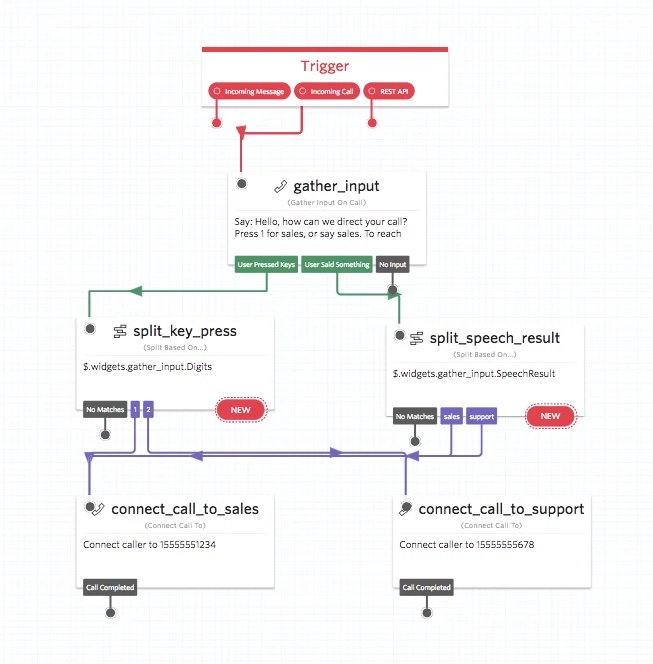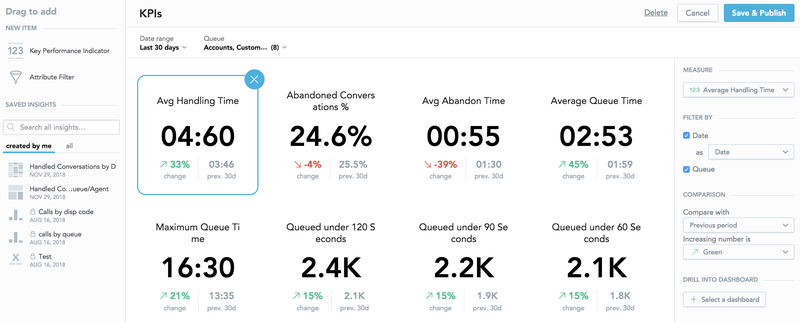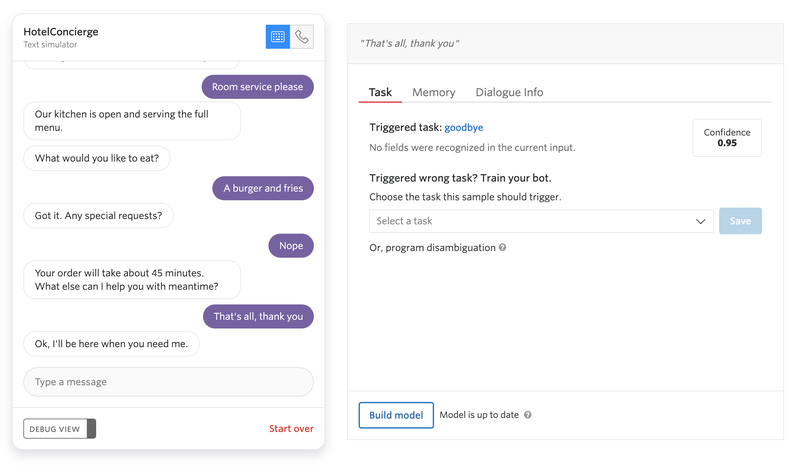12 contact center technologies and trends to support your agents and customers
Time to read:
12 contact center technologies to support your customers
Contact centers have a lot of moving parts. You've got conversations flying across multiple channels, customer databases that need constant feeding, metrics that demand attention, and agents trying to keep everyone happy.
Here's where contact center technologies can help. The right tools don't just make contact center employees more efficient—they actually give people their sanity back. Instead of spending half their day wrestling with clunky systems or hunting down customer information, agents can focus on what they're actually good at: solving problems and making customers feel heard.
Let’s take a look at 12 contact center technologies and how each can benefit your contact center.
What is contact center technology?
Contact center technology refers to tools and software that help contact center agents and supervisors do their jobs more efficiently while creating a positive customer experience. This includes telephony features, omnichannel integrations, and automations that engage customers effectively.
Sometimes, you'll hear contact center technology used interchangeably with call center technology. Usually, this is just a matter of semantics, and they actually mean the same thing. The only real difference is when a technology only supports calling...then it'd be solely call center technology.
Contact center technology usually falls into three main categories:
- The communication stuff: VoIP systems, omnichannel platforms, and all the technical wizardry that lets customers reach you however they want (phone, chat, email, carrier pigeon) and have it all work together.
- The brain power: CRM integrations, analytics dashboards, and AI tools that give your agents the basic information they need to do their jobs. This includes customer data, performance metrics, and insights that help you figure out what's working and what's making customers want to throw their phones.
- The automation magic: Chatbots, IVR systems, call routing, and workflow tools that handle the boring stuff so your human agents can focus on problems that actually require, you know, humans.
The whole point isn't to replace people with robots—it's to give your team the tools they need to be genuinely helpful instead of apologetically incompetent.
Good contact center technology makes agents' lives easier and customers' problems actually get solved. Revolutionary, right?
What are the benefits of using contact center technologies?
Contact center technologies benefit your business, contact center agents, and customers through:
- Improved efficiency and productivity: Contact center technologies help automate processes such as call routing, saving agents time and helping them work more efficiently. Additionally, automation tools help customers reach the right resources or agents quickly, improving their experience. Lastly, chatbots can help reduce agents’ workload, increasing their productivity and giving customers better service.
- Personalized customer experience: Contact center technologies can support agents by surfacing the necessary information to provide personalized support. This is crucial, as 66% of customers admit they’ll stop doing business with a brand that doesn’t personalize interactions, and 86% say brands can increase customer loyalty with personalized experiences.
- Streamlined omnichannel support: Contact center technologies offer cross-channel integrations that enable agents to support customers on their preferred channels while carrying over the context of previous interactions to provide a seamless experience. This omnichannel support impacts revenue—businesses report that investing in digital engagement helped them increase revenue by 90% on average in 2022.
- Improved performance: Contact center analytics tools allow supervisors to track and analyze contact center metrics from a single dashboard. This gives them quick access to valuable performance insights to measure and improve contact center performance.
Top 12 contact center technologies to know
The following contact center technologies are vital to providing quality customer support across channels. And while the technologies your contact center needs will depend on your primary channels, the right contact center solution will include these tools and features natively or through integrations.
Let’s dive into the top 12 technologies to consider for your contact center.
1. VoIP
Voice Over Internet Protocol (VoIP) is one of the most important call center technologies because it enables businesses to make and receive phone calls over the internet. This eliminates outdated landlines, replacing them with VoIP-enabled devices, such as desk phones, cell phones, mobile devices, and computers.
VoIP technology frees call centers from legacy hardware and gives businesses the flexibility to set up virtual call centers with basic equipment.
2. CTI
Computer telephone integrations (CTI) enable contact centers to connect phones and computers, unlocking advanced functionality. For example, CTI can help contact center agents improve efficiency through pop-up screens with contextual information, automated dialing, and call monitoring.
CTI has been around since 1992, but thanks to recent integrations with digital channels like SMS and live chat, it continues to facilitate efficiency in modern contact centers. For example, Lyft uses a CTI integration to connect associates’ phones and computers, allowing them to navigate simultaneous conversations across channels.
3. Call queuing
Call queuing places inbound calls on hold, then surfaces the calls to agents accordingly. This is essential for call centers, as it helps organize inbound calls. Additionally, call centers can combine call queuing with other routing models, which we’ll discuss next, to route calls to the appropriate agent depending on the customers’ needs.
4. ACD
Automatic call distribution (ACD) systems route inbound calls to available contact center agents. ACD systems can use a few different types of attribute-based routing to connect callers to the right agents:
- Skill-based routing routes callers to agents with specific skills or training depending on their needs (like connecting callers with technical difficulties to tech support and callers with billing questions to the billing department).
- Priority-based routing moves callers with urgent issues to the top of the queue.
- Time-of-day routing routes calls to agents based on their time zone and availability.
ACD works in tandem with interactive voice response (IVR), which we’ll discuss next, to route calls without a live operator.
5. IVR
IVR employs automated menus to help callers reach the appropriate agents or self-service options. It works alongside ACD to route customers based on their input. IVR receives callers’ inputs via spoken responses (like “if you have a billing question, say ‘billing’”) or touch-tone input (like “press 1 for scheduling”). Thus, IVR eliminates live operators and routes customers to the right agent quickly and efficiently—as long as you follow best practices.

6. Call recording
Call recording tools enable contact centers to record customer calls for quality assurance and gather valuable information, like customer insights and common questions.
However, call recording isn’t as straightforward as pressing Record. That’s because businesses must protect customer data, which means call recording practices must comply with privacy guidelines.
This is where call recording technology can help. For example, it can enable agents to start recording once they have verbal consent from the customer (and not before) and pause recording when they provide sensitive information, like a credit card number.
Additionally, call recording technology can encrypt recorded calls and offer benefits like automated call transcription.
7. Data analytics
Data analytics are vital to measuring key performance indicators (KPIs), evaluating agent performance, and identifying areas for improvement. But when metrics are on different platforms and reports, it can be a challenge to view your contact center’s performance.
That’s why access to data analytics from a single dashboard is essential for contact center managers or supervisors—it enables them to view top-level KPIs and zoom in on individual conversations. This gives them the necessary insight to improve performance and provide agent feedback.

8. CRM integration
Contact center integration makes day-to-day operations more efficient by connecting your contact center with other vital tools in your tech stack. One of the most important platforms to integrate with your contact center is your customer relationship management (CRM) software. This facilitates data flow, giving agents access to customer profiles and notes on previous interactions to provide more personalized support.
For example, say a customer calls support with a technical issue. With a CRM integration, the agent can see that the caller recently interacted with the sales team and purchased a software upgrade, which is vital information in solving the customer’s issue.
9. CDP integration
A customer data platform (CDP) is another crucial tool to integrate with your contact center. It combines data from all customer touchpoints across channels, creating a centralized customer database. Then, businesses can segment that database based on various attributes or phases in the customer journey to tailor customer experiences.
Integrating your CDP with your contact center gives agents access to real-time data to provide hyperpersonalized support—which, as we mentioned earlier, is vital to customer retention and loyalty. For example, a CDP integration can enable agents to view a customer's interactions with social media ads and marketing emails, giving them a more holistic view of the customer’s interests and preferences.
10. Chatbots
A chatbot is an AI-powered program that can assist customers with basic questions and tasks without a live agent. Chatbots can help reduce agent workload while giving customers the support needed.
For example, a chatbot can answer FAQs, schedule appointments, and perform straightforward tasks, like taking a meal order. And if the chatbot can’t answer the customer’s inquiry, it can hand off the interaction to a live agent, passing along the context so the agent can jump into the solution.
In short, chatbots allow customers to self-serve while allowing agents to focus on more complex issues that require human interaction.

11. Omnichannel integration
Omnichannel integration facilitates data flow and allows agents to engage customers across channels seamlessly to provide a consistent experience.
For example, say you don’t have integrated contact center channels, making them time-consuming for agents to toggle back and forth to view previous interactions across channels. This can lead agents to ask repetitive questions that frustrate customers.
Investing in digital channels helps businesses meet customers’ needs, as we mentioned earlier. So it’s vital for contact centers to offer integrated support across various channels (like SMS, live chat, video, and voice) to provide the best customer experience.
12. Unified UI
A unified UI brings all your contact center’s channels and integrations into a single dashboard, putting all the information agents need in one place. This direct access to data and tools enables contact center agents to work more effectively.
Emerging trends in contact center technologies
The above contact center technologies are essential for businesses to give customers high-quality support. However, the industry is evolving constantly, and new technologies have emerged that give contact centers even more flexibility to meet customer needs.
Let’s take a look at the top trends revolutionizing contact centers today.
AI integration
AI is one of the most talked-about innovations in business and technology. What was once a sci-fi dream is now an accessible tool that businesses can leverage to predict customer needs and increase efficiency.
So how can contact centers use AI? Contact center integrations, like Google Cloud CCAI, can help agents work more efficiently, thanks to:
- Virtual agents that take IVR systems and chatbots to the next level by providing customized customer support.
- Agent assist features that automate tasks and surface recommended responses based on customer input.
- Sentiment analysis that helps understand customer intent and provide recommended actions to meet it.
Additionally, AI can empower businesses to improve the customer experience by analyzing vast amounts of data to uncover customer insights and engagement opportunities.
If your business is just getting started with AI, learn the basics concepts, then discover how your business can leverage this technology to engage customers better.
Cloud-based solutions
Contact centers that have been around for a long time likely rely on on-premise hardware that’s expensive to update and maintain. However, modern cloud-based solutions give businesses more agility to update contact centers to meet evolving customer needs.
Additionally, cloud-based solutions allow contact center agents to work remotely (as long as they have an internet connection and VoIP-enabled device) because they don’t need on-premise equipment.
However, the best cloud-based solutions offer the flexibility for businesses to augment on-premise contact centers without having to replace everything at once. For example, you can add new channels, like SMS and live chat, that integrate into your existing phone systems.
Learn more about the benefits of cloud contact centers.
Integrate technologies into your call center with Twilio Flex
Now that you have an idea of the most important technologies, you may want to know how to integrate these into your contact center. Whether setting up a new contact center or modernizing your existing solution, Twilio Flex can help.
This agile contact center platform empowers businesses to deliver personalized, frictionless customer support, thanks to:
- Digital channels that integrate with your existing tech stack.
- Seamless integrations with CRMs, CDPs, and AI tools, like Google Cloud CCAI.
- Customizable UI where customer service agents can access customer data, view the context of previous interactions, and engage customers across channels.
- Enhanced flexibility to augment your existing contact center solution or migrate to Flex as needed.
Ready to get started? Learn more about how to integrate AI into your contact center with Flex.
Related Posts
Related Resources
Twilio Docs
From APIs to SDKs to sample apps
API reference documentation, SDKs, helper libraries, quickstarts, and tutorials for your language and platform.
Resource Center
The latest ebooks, industry reports, and webinars
Learn from customer engagement experts to improve your own communication.
Ahoy
Twilio's developer community hub
Best practices, code samples, and inspiration to build communications and digital engagement experiences.


